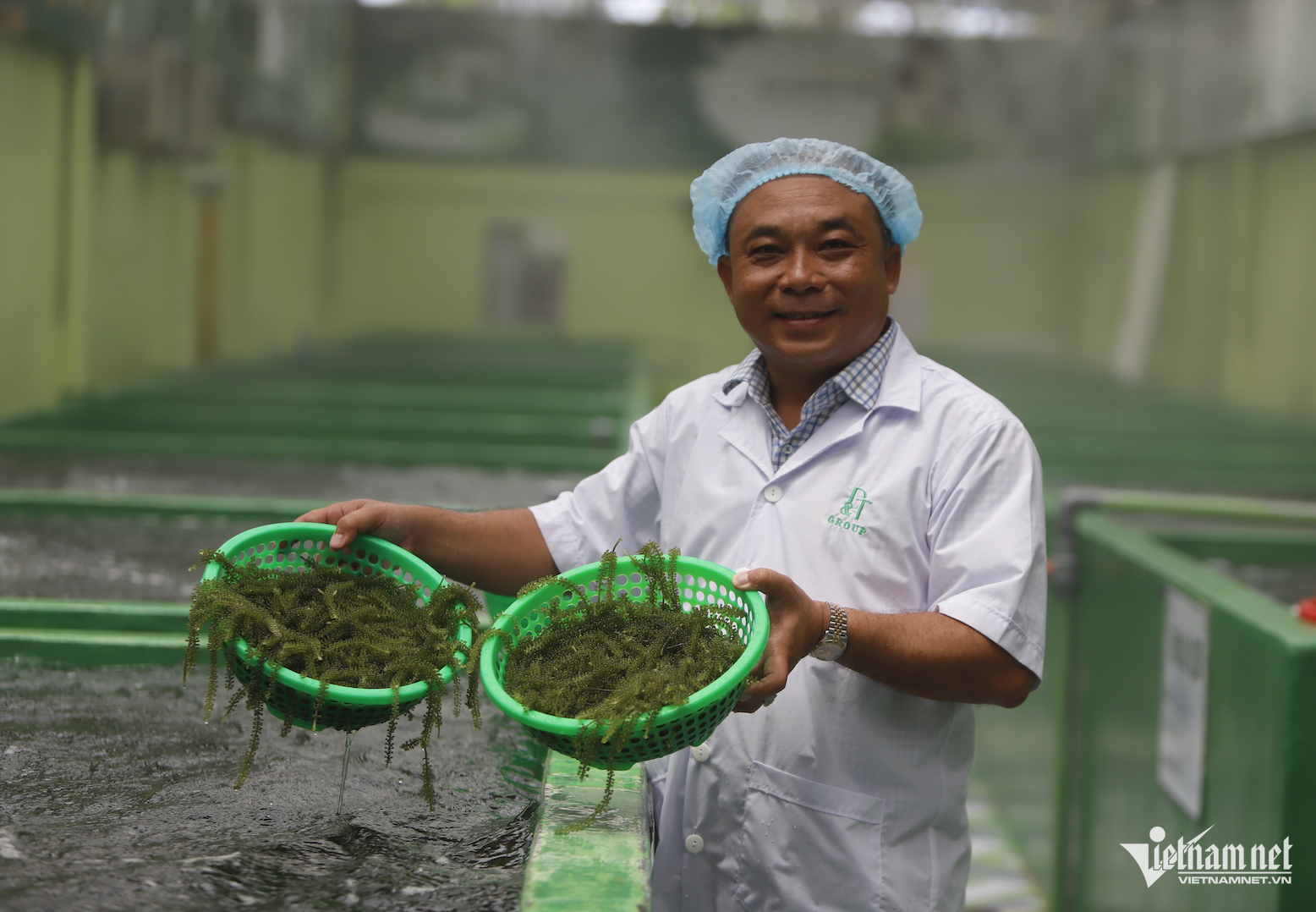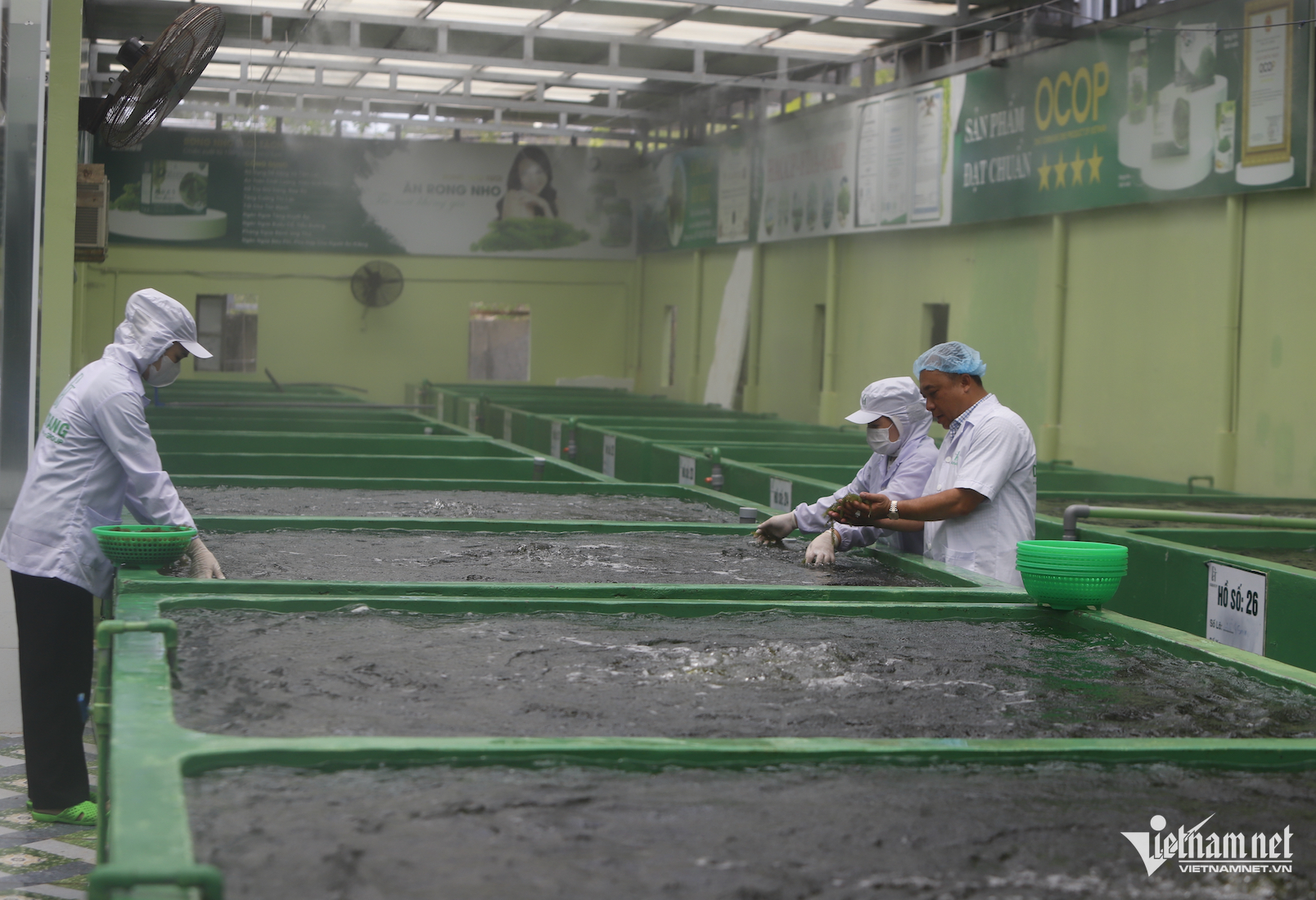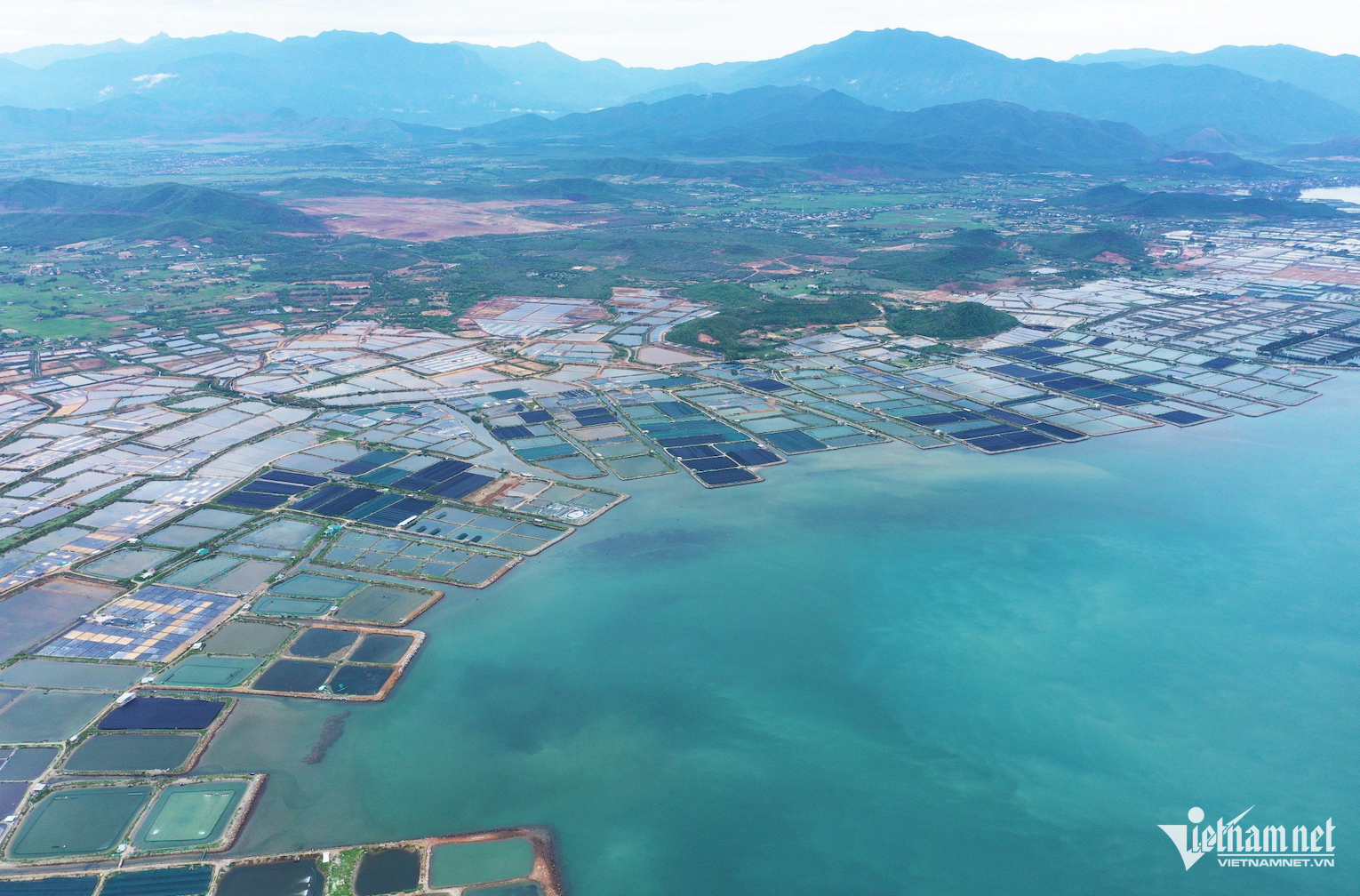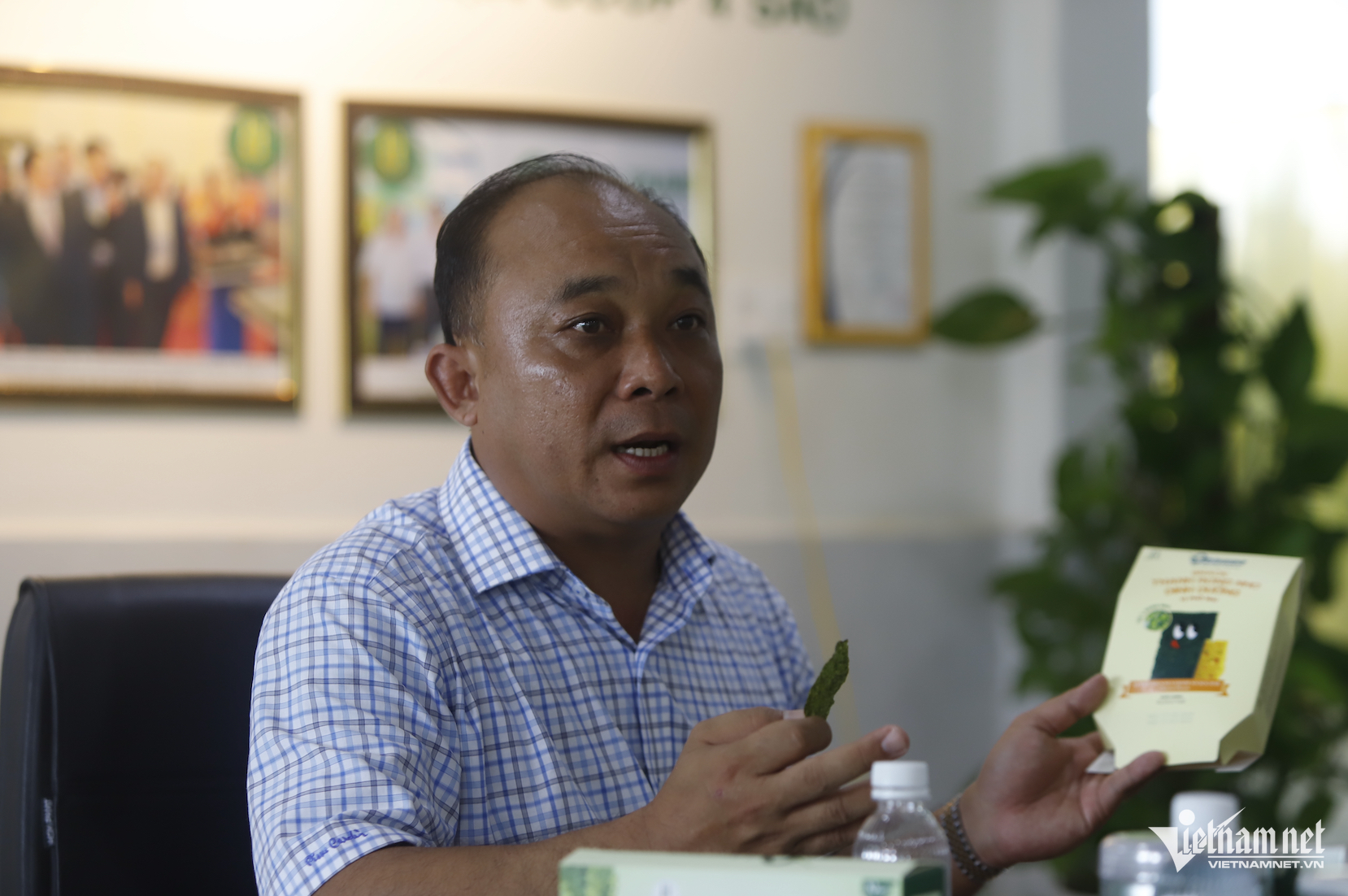This green, non-greenhouse gas-emitting ecosystem, from cultivation to production, has helped many farmers in Khanh Hoa province prosper.
Editorial note
Vietnam's economic growth recovery in the first half of 2024 is evident, with GDP in the second quarter reaching nearly 7%, bringing GDP growth in the first half to 6.42%.
Contributing to this recovery is the significant rise of several localities, including Khanh Hoa's remarkable rebound after two years of struggling due to the Covid-19 pandemic. Changes in mindset and actions, along with the ability to embrace the 'green' trend, have led to impressive growth figures and numerous innovations in this locality.
The series "Khanh Hoa Reinvents Growth Drivers" by VietNamNet describes this locality's journey of overcoming difficulties and seizing new trends.
Part 1: Green growth and innovation drive Khanh Hoa’s economic rebound
Part 2: High-tech offshore farming: A billion-dollar industry for Khanh Hoa fishermen
The miracle of sea grapes

Introducing visitors to the bubbling tanks where sea grapes are cleaned before being deeply processed into various products, Nguyen Quang Duy, CEO of DT Group (Nha Trang city, Khanh Hoa province), enthusiastically showcases clusters of sea grapes that glisten like "green caviar" from Japan, a type of superfood beneficial to health.
Taking a fresh cluster of sea grapes from the tank and eating it directly, Duy adds that the seaweed is crispy and ultra-clean, grown and processed without any chemicals. Remarkably, sea grapes also contribute to restoring the environment in areas where they are cultivated.
"Where sea grapes are grown, the ecosystem flourishes. This type of seaweed can clean water polluted by organic substances, especially in industrial shrimp farming areas. So, wherever sea grapes fall into the water, the marine environment is cleaned," he explains.
Due to the extraordinary benefits of sea grapes, over a decade ago, Duy decided to leave his job as a pharmaceuticals manager for a company in Nha Trang to pursue the "sea grape dream," recognizing the significant cultivation potential in Khanh Hoa's coastal areas and the South Central region.
In 2012, Duy invested in a 30,000 square meter sea grape farm in Ninh Hai (Ninh Hoa town, Khanh Hoa), while collaborating with other units to find the optimal formula for cultivation and processing sea grape. Initially, the seaweed yielded about 2.5 tons per hectare, much lower than his expectations.
The first harvests were given to relatives and neighbors. When they enjoyed the product and spread the word, he began to see some customer demand, albeit limited.
Gradually, the farming area expanded, and productivity increased. Apart from the company's farms, he also collaborates with many local farmers.
However, as sea grapes were grown on a large scale and the consumer market was not well aware of the product, he faced difficulties in finding buyers, resulting in significant inventory.

Expanding and innovating
After many restless nights, he realized that processing, marketing, and bringing products to market were crucial. He traveled extensively within the country and to the USA and Japan to find markets and learn about processing technologies to make sea grapes more convenient for modern life.
The Japanese market, in particular, showed great potential for sea grapes. Fresh sea grapes fetch a high price in Japan, and Duy signed several contracts to export to this market.
However, due to inadequate preservation technology, many batches of sea grapes shipped to Japan were spoiled, resulting in significant losses.
"Damaged sea grapes were returned, with some batches costing several hundred million VND, while others were worth up to a billion VND," he recalls.
After eight years of continuous effort, research, and frequent failures, Duy eventually succeeded. Many properties and houses were sold, and he borrowed significant amounts from banks to cover business expenses and debts.
He persevered, determined not to abandon the sea grape dream and finally achieved success.
Holding a small bag of dehydrated sea grapes, Duy explained that the product is packed without preservatives, with the solution inside being 100% saline. The product can be stored at temperatures between 28-32 degrees Celsius for up to six months.

Establishing a green ecosystem
Duy's success in stabilizing the preservation process opened doors for Japanese importers, highlighting the superior quality of Khanh Hoa sea grapes, now importing hundreds of tons annually.
Building on the success of dehydrated sea grapes, he and his team developed dozens of food products from sea grapes and are now working on extracting ingredients for cosmetics.
Currently, DT Group's farming network harvests an average of seven tons of sea grapes daily, selling 30 tons domestically and nearly 40 tons to Japan, the USA, Canada, South Korea, and Australia each month, equating to approximately 2,500 tons per year. Annual revenue is about 50 billion VND ($2.3 million).
After 14 years, starting from a 3-hectare yielding only 2.5 tons per hectare, Duy has expanded the linked sea grape farming area to 85 hectares across Ninh Hoa, Cam Ranh (Khanh Hoa), and other regions like Ninh Thuan and Phu Yen. He plans to add another 80 hectares soon.
"I believe in giving back to nature what we take from it," he says. Therefore, with sea grapes, Duy has created a green ecosystem from farming to processing.
Sea grapes are cultivated in clean standard ponds, helping to improve the water environment. Farmers manually harvest fresh sea grapes and bring them to a factory in Nha Trang, where they are cleaned again for 3-5 days before processing. The entire production process is chemical-free.
The sea grape production facility also follows a green process. Solar energy systems provide clean power for production, and packaging materials are environmentally friendly. Duy is confident that his sea grape production chain is entirely green and free of greenhouse gas emissions.
Besides existing standards like HACCP, ISO, and FDA, the company is working on clean farming and chemical-free certification. They are also aiming for a green production certification to label their products accordingly.
Supporting farmers

Most importantly, the green ecosystem Duy has created has helped many farmers in Khanh Hoa escape poverty and achieve prosperity through linked sea grape farming.
Duy estimates that an average sea grape pond of about 5,000 square meters can yield a profit of 15 million VND ($600) per month for farmers. With nine months of cultivation each year, farmers can earn a profit of 135 million VND per pond annually.

In DT Group’s linked farming network, small-scale farmers typically have around three ponds, while larger-scale farmers have up to seven or eight. Consequently, small-scale farmers can earn several hundred million VND annually, while large-scale farmers can make billions.
"We are working on small projects to purchase lower-grade sea grapes (grades 3-4) for deep processing. This will benefit farmers by providing an additional 5 million VND profit per pond each month," he explained.
Duy believes that creating products and selling them is necessary but not sufficient. He aims for balance, ensuring product sales, helping people prosper, and protecting the environment. According to him, when everything is balanced and harmonious, that is enough.
Tam An, Xuan Ngoc, Hien Anh